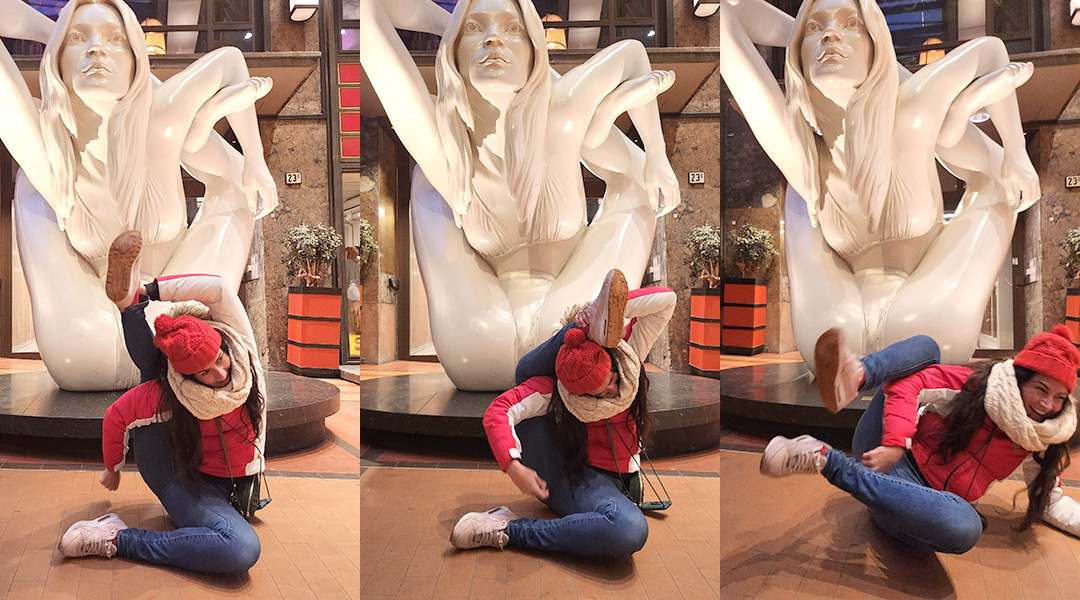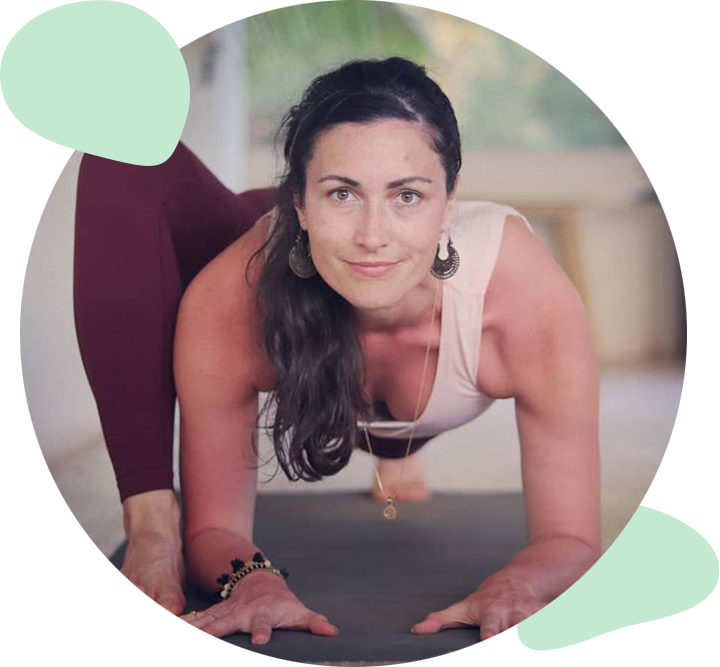How to Find Balance
Peace begins within ourselves.
You learn balance the moment you’re about to lose it
I often draw a parallel between mental balance and physical balance, as it’s sometimes easier to relate to the practical physical plane than the intangible mental one. It’s pretty instinctive to react and adjust in order to avoid a physical fall, whereas the idea of taking action and adjusting to preserve our mental balance is sometimes more difficult to grasp, let alone execute. Though in both cases, we don’t necessarily think about what’s needed for us to remain in a state of balance, until the exact moment we’re falling out of it.
A couple days ago I landed in Oslo and the snow welcomed me outside the train station. I was pretty excited and started walking confidently towards the exit. Quickly, physics reminded me that snow and ice are indeed very slippery, and that my casual sneakers were certainly not the most appropriate piece of gear I could have worn in this context. But being fairly used to challenging my body with physical exercises, my muscles reacted before I could even realise what was happening: my core engaged, my quads stabilised, and my feet replaced to adjust my center of gravity and bring me back to a comfortable state of balance. All this happened whilst my brain only had a chance to articulate through my mouth a typical french swearing.
Before the change of context - the snow - literally swept me off my feet, I was totally unaware of what my body was already doing to keep me in a state of balance. From the moment we learn how to stand and walk as toddlers, our bodies instinctively register how to balance, to the point where we don’t have to actively think about it. And that’s a good thing: can you imagine if we had to focus to stand and walk? We wouldn't be able to do anything else.
But to learn how to balance as toddlers, our bodies first had to experience falling. From falling, we learned what to do to adapt and recover.
The same goes with our mental balance. Ideally, we should have all grown up learning how to find our mental peace like we learned to find our physical equilibrium. With the help of loving and caring surroundings encouraging us, holding our mental hand when it gets wobbly, and helping us getting back on our mental feet after each fall. But the reality is that mental health is rarely considered or discussed. Most people feel powerless and panic facing someone experiencing a mental health breakdown. As a result, all of us develop coping mechanisms, more or less healthy, more or less efficient. Part of maturing comes from the acknowledgment that some of those mechanisms might not be indeed either healthy or efficient, and from the will to un-learn, re-learn and fix them. Even if that sometimes means going through the discomfort of giving up on familiar default behaviours. That’s proper scary.

It’s only once you see yourself drifting that you can feel like something’s off. And if you put the appropriate effort to tune in and pay attention to the signals your body, your mind and your heart are sending you, you can start the process of adjusting and eventually coming back to a state of balance. With time and practice - like with your first steps - you'll also be able to catch yourself before falling.
Balancing requires you to control and to let go
How do we get back to this state of balance in a healthy and sustainable way? The first step is to tune in and pay attention to the signals. This, in itself, is pretty scary. What if we don’t like the person we need to be in order to feel at peace? I’m gonna talk about what I know from experience, but I’m convinced the same applies to a lot of other types of mental health disorders.
During my years of anorexia, my lifestyle was the quintessence of control. Everything I did, from raising an eyebrow to putting food in my body was carefully planned and measured. I had lists for literally everything, and I was always 2 to 3 steps ahead, for my brain spent all its functioning time anticipating any possible outcome of any potential situation. It’s no surprise that after a couple years like this, my body and my mind needed an outlet. That’s when I started alternating periods of uncontrolled bulimia, and periods of restrictive anorexia. From total chaos to dictatorial control.
Before I started healing from my eating disorders, I was taking a lot of pride in embracing chaos. By doing so, I thought I was performing a strong act of rebellion against what was expected out of me. Because nothing I could do would be good enough anyway. Whatever the reason that motivated this, I had this picture in my mind of who I wanted - and didn’t want - to be. But by trying to stick to this imaginary version of me, I was ignoring my needs, I was avoiding setting boundaries and I was ultimately hurting both my physical and mental health.
Once I felt safe enough to allow myself to explore what my needs really were, I discovered that the first step was to let go of those expectations I had - or others had - set for myself. That list of boxes that I thought - or was told - I had to check in order to be an accomplished, happy and successful adult woman. No one else but you should ever decide on what good looks like for your own life. Someone’s success path may feel like the definition of hell for someone else. Though it doesn’t mean that anybody’s doing anything wrong.
The only thing that matters really, is to behave in alignment with our beliefs and values.
Learning to make peace with giving up on what seemed like some sort of path or structure, even though it might have never fitted who we are, isn’t going to happen overnight. It’s a big change, and big changes are scary. We may even grieve this inadequate path, especially if we held onto it for a long period of time. To counter-balance, we have to start working on figuring out what actually makes sense for us. Draw our own path based on our actual needs. What’s our very personal definition of ‘success’ to put it corporately. And to find this out, we need to keep tuning in, consistently, day after day.

Balance isn’t a place of stillness
I came back recently from a week of surfing holidays. Even if you’ve never tried surfing I’m sure you can imagine that standing on a moving board floating on waves is a tough balancing act! In the evening, my friends and I were watching a documentary about pro surfers, just to get some inspiration (and some drama too), and honestly, when you watch those people move with such ease with their board on the agitated ocean, you clearly wonder how on earth can they remain so stable and still.
Well. Truth is, they don’t.
Because to balance in an unpredictable context, one must be able to take action in order to adapt and adjust quickly. For sure from the outside they all look stable and still, but internally they’re fully focused on feeling all the shifts, and adapting to them.
As always we can draw a parallel between physical and mental balance. Even your most composed friend is perpetually making adjustments. Just like pro surfers, they certainly have experience; they know themselves pretty well and have integrated patterns to find their balance back when they feel like they’re drifting. They may have set a healthy perimeter - boundaries - within which they know they can play without too much risk of a nasty fall. That's their safe space. They've acknowledged and set those limits from a place of love rather than from a place of shame (perfectionism) or fear (anxiety). By staying within this safe perimeter, they minimise the amplitude between chaos and full control, and keep the recovery much more manageable.
Setting healthy boundaries becomes easier once we know what we need, and let go of what we don’t.
Boundaries exist to protect the space we need to heal and grow. They allow us to feel better about ourselves, which ultimately leads to loving ourselves better. They also enable the people who care for us to love us better too, as the more they know about our needs and values, the best they can support us.
Comments
Leave a comment.Fields marked with a * are compulsory. Your email won't be published.

 By Cyro
By Cyro 